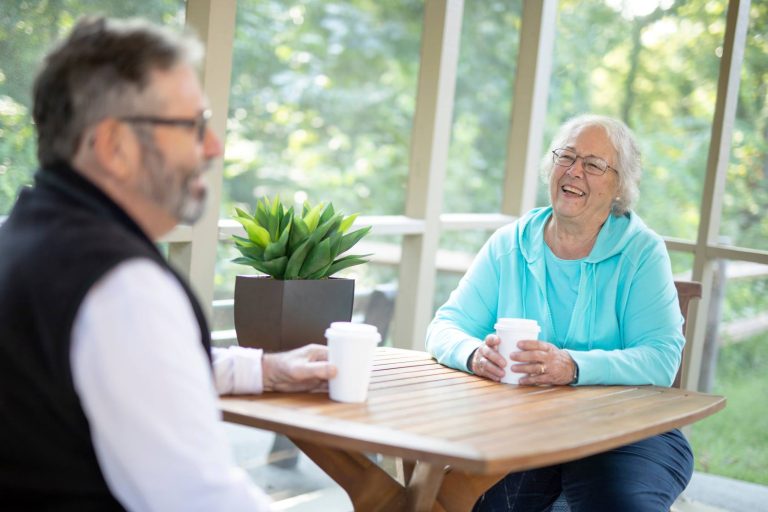What should you look for as you evaluate an older loved one’s wellbeing? How do you know when it is time to get them some level of assistance? And what are your options for care, especially if you do not live nearby?
Assessing the situation
When visiting an older loved one’s home, there are a number of things you might note as you evaluate their situation. In short, you are looking for any substantive changes to their behavior or lifestyle.
Household conditions
Are they keeping up the overall care and cleaning of their home, inside and out? Are essential repairs being addressed? Are they opening mail and paying bills? Is their vehicle in good repair without new damage?
Personal hygiene and appearance
Are they dressed appropriately for the weather and the occasion? Is clothing clean and tidy? Are they bathed, groomed, and odor-free? Do they look to be in good overall health, free of cuts or bruises (such as from a fall)?
Wellness and nutrition
Do they have an adequate supply of nutritious food? Are they maintaining a healthy weight (not losing or gaining an extreme amount)? Are they taking any medications at the correct dose and frequency? Are they keeping up with medical and dental visits?
Behavior and socialization
Are you able to carry on a conversation in the same manner you are accustomed to with them? Are they engaging in social outings and keeping up with any hobbies they have? Is their mood and overall demeanor as you’d expect?
Safety
Do they seem stable on their feet and able to maneuver around the home with relative ease, including negotiating any stairs? Are they able to sit and stand without assistance? Do they remember to perform safety-related tasks like turning off the stove/oven and locking the door?
When it’s time for assistance
If you answered “no” to any of the above questions, it may be a sign that your loved one needs some level of assistance with activities of daily living (ADLs) — like bathing, eating, and dressing — or instrumental activities of daily living (IADLs) — like housekeeping, food shopping, finances, and transportation.
This can be a touchy topic to broach, however. Many people, understandably, pride themselves on their independence and self-reliance, and it can be difficult to face the realities that often come with the aging process. But the fact is, if you are waiting for your older loved one to come to you and say, “I need help; I don’t think I should live on my own anymore,” you may be waiting forever.
To initiate a conversation about the potential need for outside help, first take stock of what activities may be challenging for them — again, those questions above can help you survey the situation. Then start the conversion by asking questions about how their life might be made easier or more enjoyable. You can gently segue into mentioning ways they might outsource tasks that are becoming difficult for them.
Depending on their level of need, you may face the possibility of having to be a bit more assertive about the situation. If it’s a housekeeping service or a handyman to help with household tasks, people may not resist the idea too much. However, if they need help that falls more into the ADL/assisted living category, you may face more pushback.
Options for care
If you have concerns about your loved one’s ability to safely and healthfully live on their own going forward, it likely indicates that it is time for some level of caregiving services, either in their home, a loved one’s home, or in a senior living community that provides care services, such as an assisted living facility.
Paid in-home assistance can get expensive quickly, depending on how much care is needed — averaging around $5,000 per month for 44 hours per week of care, according to Genworth’s 2021 Cost of Care Survey. Moving a loved one to an assisted living community can be pricey as well, averaging $4,500 per month for a private one-bedroom unit.
But there also are costs that come with “unpaid care,” that is to say, caring for an aging loved one on your own or with the help of other family members. Unpaid family caregivers often must endure lost income, spending personal money on care recipient expenses, time away from young children, emotional stress, and physical strain, just to name a few of the challenges.
A preemptive solution for potential care needs
Confronting our own mortality — as well as that of our loved ones — can be difficult. While it is very normal as we age for a person to begin to need a little extra help with certain tasks that once were simple, many of us find it difficult to accept this evolving reality. Add to this the desire that many people have to remain independent as they grow older, and it can make for a tough conversation with a loved one who is starting to experience some age-related issues.
This is one argument for making a preemptive move to a senior living community, such as a continuing care retirement community (CCRC, or life plan community) while a person is still relatively young and in generally good health — before they may begin to need some assistance. They can move in while still completely independent but also enjoying the services and amenities that make for a stress-free lifestyle.
Moving sooner rather than later enables CCRC residents to get settled into their new home, make a support system of friends, and get involved in the community’s events and activities, if desired. And bear in mind that most CCRCs do require new residents to be generally healthy in order to qualify for move-in — yet another reason why moving sooner rather than later may be preferable.
Care plus peace of mind
It’s worth noting that people who opt to move to a CCRC have actually been shown to be happier and healthier than their community-dwelling peers. In addition to a maintenance-free home designed for seniors’ safety and other amenities that facilitate a carefree lifestyle (like housekeeping and linen service), CCRC residents also have access to nutritious food, an array of activities and social opportunities — all with the aim of keeping seniors happy and healthier (mentally and physically) for longer.
But one of the biggest draws of living in a CCRC is the peace of mind that it grants to the resident and their family. Knowing they have access to a full continuum of care services if and when it might be needed can alleviate many concerns about the “what ifs” of aging.
It also can eliminate numerous stressful care-related decisions both for the senior and their family. Concerns around self-care, nutrition and wellness, social isolation, household maintenance and upkeep, and more are virtually eliminated for CCRC residents. A CCRC truly can be a “preemptive” solution for a senior’s potential care needs.
For Digital Use (please use the exact hyperlink):
The above article is provided by myLifeSite and is legally licensed for use.
For Hard Copy Use:
Content provided with express written permission from myLifeSite | www.mylifesite.net





